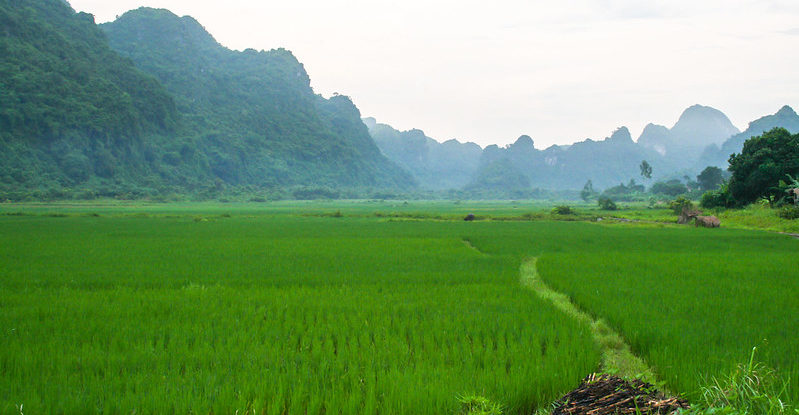
Theories surrounding the origins of the SARS-COV2 coronavirus often point to disturbances in the natural environment. Through disruptions and human encroachments, pathways are formed and unlikely connections between species made.
Research indicates that COVID-19 was almost certainly transmitted from a pangolin or a bat to humans in a wet market in the city of Wuhan, China.
While the evidence shows that the trade in wildlife can spread pathogens and infectious diseases, human eating habits may be a big part of the equation in more ways than one.
“The food most associated with biodiversity loss also tends to be connected to unhealthy diets across the globe,” argues a senior associate scientist with the Center for International Forestry Research (CIFOR) in a new article in The Conversation, referring to the production of such food staples as rice, wheat and maize.
Since the second half of the 20th century, agricultural intensification has been the dominant method of producing large amounts of food. Goals have included increasing staple crop yields and large-scale beef production.
Yet, the transition to intensive, high-yielding food production reliant on a limited number of crop and livestock species has failed to adequately address global malnutrition, writes Terry Sunderland, who is also a professor in the Faculty of Forestry at Canada’s University of British Columbia.
“Nearly 800 million people still go to bed hungry, one in three is malnourished, and up to 2 billion people suffer some sort of micronutrient deficiency and associated health impacts, such as stunting or wasting,” he writes.
As well, agricultural intensification leads to deforestation and landscape degradation, permitting conditions for the further spread of a range of such virulent zoonotic diseases as SARS, MERS, H1N1, Chikungunya, Zika and Ebola, which has been linked to deforestation, Sunderland adds.
“The agricultural sector is responsible for up to 30 per cent of greenhouse gas emissions, soil erosion, excessive water use, the loss of important pollinators and chemical pollution, among other impacts,” he states.
“Roughly 70 percent of the global forest estate is now within a kilometer of a forest edge . . . destroying that critical buffer that forests provide.”
“Farming large numbers of genetically similar livestock along the forest frontier may provide a route for pathogens to mutate and become transmissible to humans. Forest loss and landscape change bring humans and wildlife into ever-increasing proximity, heightening the risk of an infectious disease spillover,” he adds.
We want you to share Forests News content, which is licensed under Creative Commons Attribution-NonCommercial-ShareAlike 4.0 International (CC BY-NC-SA 4.0). This means you are free to redistribute our material for non-commercial purposes. All we ask is that you give Forests News appropriate credit and link to the original Forests News content, indicate if changes were made, and distribute your contributions under the same Creative Commons license. You must notify Forests News if you repost, reprint or reuse our materials by contacting forestsnews@cifor-icraf.org.
Further reading
Jane Goodall and Robert Nasi: Put forests at forefront of COVID-19 recovery
Q+A: Rollback of environmental protections continues during COVID-19 pandemic, expert says
Reforestation could play role in pandemic recovery jobs creation, says IMF's Georgieva
Will COVID-19 put the kibosh on major in-person conferences for good?
Human activities link fruit bat presence to Ebola virus disease outbreaks
Coronavirus COVID-19 Global Cases
Wildlife and protected area management
Centers for Disease Control and Prevention: Zoonotic Diseases
Management of intact forestlands by Indigenous Peoples key to protecting climate
Mix up the diet with some wild meat
Sustainable wildlife management key as Guyana faces rapid economic change
Sustainable Wildlife Management Programme
John E. Fa on striking a balance between wildlife protection and use
Canadian caribou hunting ban highlights challenges of wildlife management